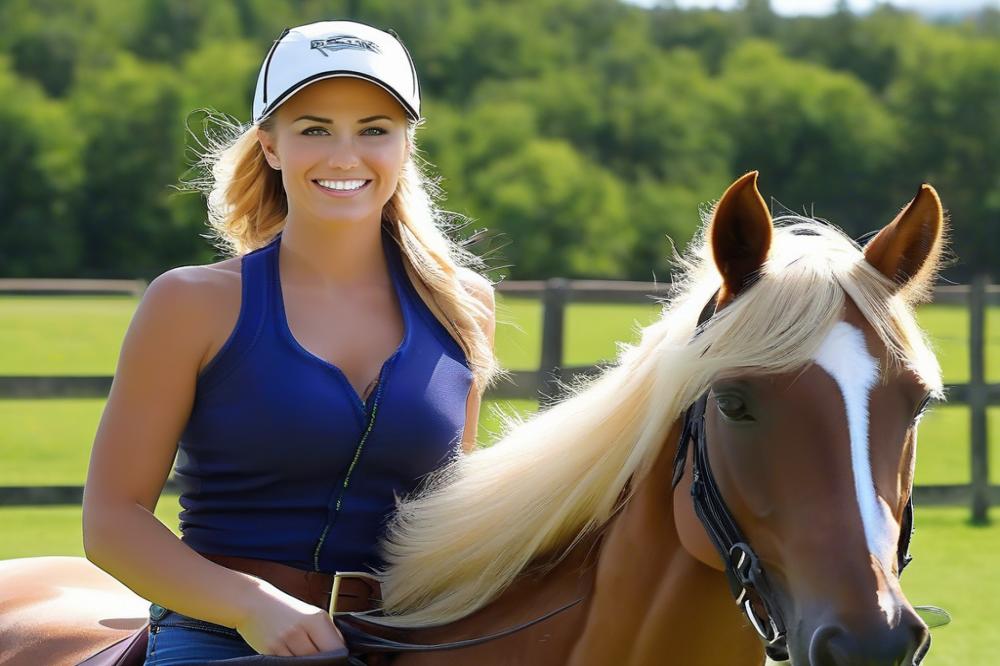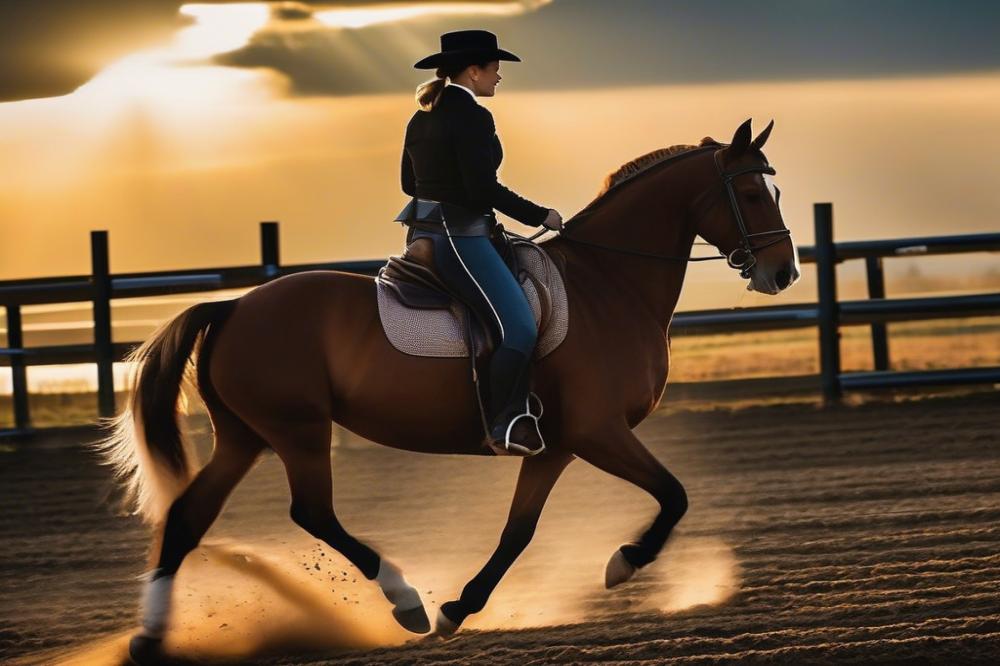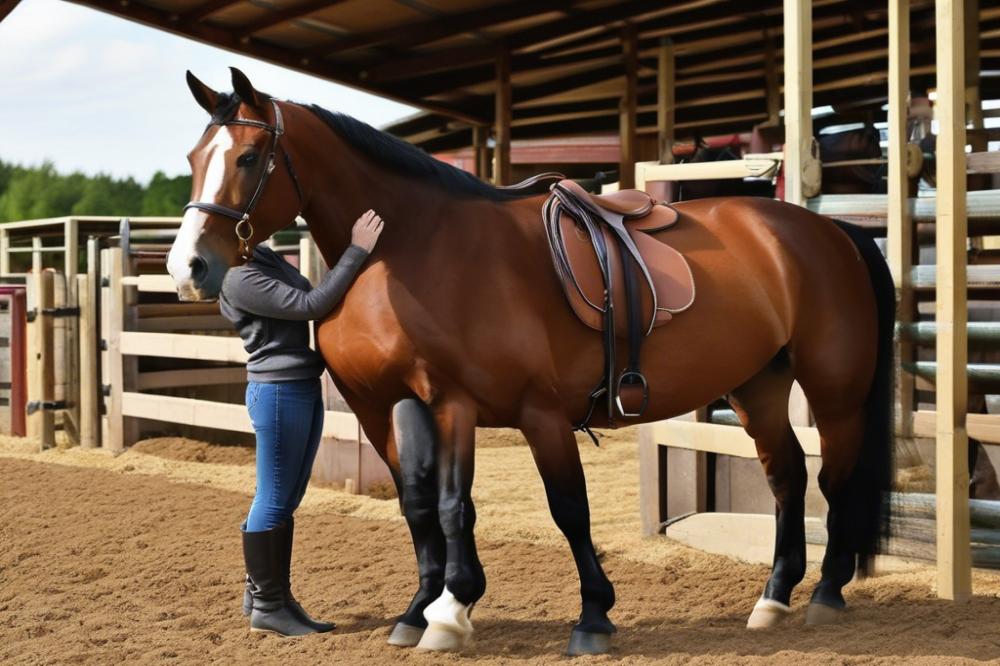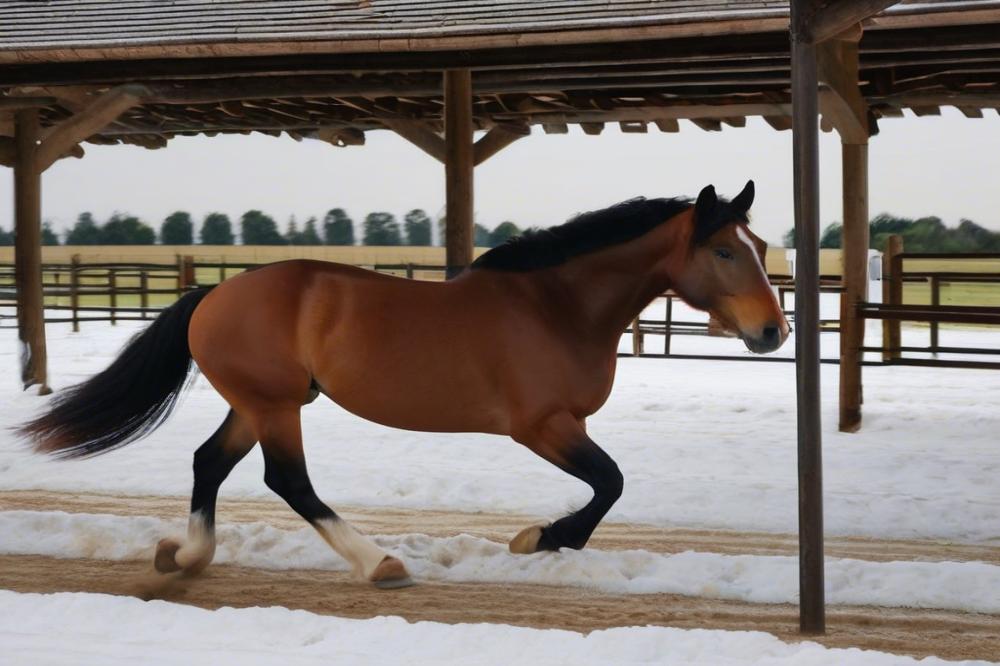An Overview of the Racking Gait
Have you ever watched a well-trained horse move with a captivating gait that seems to float above the ground? That’s the racking gait. It’s a smooth, four-beat lateral gait that can make any rider feel like they’re gliding through the air. Famed for its elegance, the racking gait has become a cherished specialty in various equestrian disciplines. Not every horse can naturally perform this unique movement, which makes racking training an important aspect of horse training.
The Importance of Training a Horse to Rack

Training a horse to rack isn’t just about looking impressive; it carries significant benefits. Riders often value this gait for its comfort during long rides. Imagine riding for hours without that jarring bounce; blissful, right? Developing this skill also enhances the bond between horse and rider, fostering trust and teamwork. The joy of mastering equestrian techniques that help achieve this gait is rewarding and adds an element of fun to horse care.
What You Will Learn

This article aims to walk you through the essential steps of racking training. You’ll discover strategies that help get your horse into that beautiful rhythm, along with insights on horse riding techniques that can ease the process. Look forward to learning various tips and tricks that can turn any spirited horse into a racking pro! Even if you’re just beginning your journey in the equestrian world, don’t worry—there’s something here for everyone.
As we dive into this journey together, let’s also remember the timeless question: can a female mule reproduce? It’s moments like this that remind us how diverse and often surprising the world of horses can be, much like the fascinating trends of akhal teke horse racing.
So, saddle up and let’s get started on this adventure of rhythm, grace, and horse-loving fun!
Understanding the Racking Gait

Definition of Racking
Racking is a special gait that some horses can perform. It’s like a fancy walk, but with a bit more style. Riders often love this gait for its smoothness. When a horse racks, it creates a rhythmic motion that makes you feel like you’re gliding along. Unlike a trot or a canter, racking offers a comfortable ride. It’s a gait where the horse moves its legs in a particular way.
Characteristics of the Racking Gait
You’ll know a horse is racking by the way it moves. Each step is purposeful and neat. The front legs often pick up higher than the back legs. You may also notice the horse’s head held slightly high, adding to the elegant look. Riders report that when this gait is done well, it feels more like riding a wave than a bumpy road. Comfort is key—no jarring bumps here. You get a feeling of gliding through the air. This flowy motion makes racking enjoyable for both horse and rider.
Differences Between Racking and Other Gaits
Racking is often confused with other gaits like trotting or running, but it’s different in significant ways. For instance, in a trot, the horse lifts diagonal legs together. In contrast, racking involves the horse moving its legs more independently. This leads to a smoother, more cushioned ride. Additionally, while trotting can feel bumpy, a good rack hardly rattles you at all. Riders of all ages appreciate how easy it is to stay balanced during this gait. Understanding these differences can enhance your equestrian skills. If you’re into horse riding or horse training, mastering racking gains extra importance.
By learning about the racking gait, you are already on your way to successful racking training. So, let’s dive into how to get your horse to rack like a pro!
Preparing for Training
Choosing the Right Horse
Selecting a horse for racking training is a crucial first step. Not every equine has the right qualities for this style of movement. Look for a horse that possesses natural rhythm and a willingness to learn. Breeds like the Tennessee Walking Horse or the Rocky Mountain Horse are often prime candidates. Remember, a horse that enjoys being ridden will likely pick up racking skills more easily. It’s like picking a dance partner; a good match makes all the difference!
Assessing the Horse’s Conformation and Temperament
When considering a horse, examine its conformation closely. Horses with strong backs and well-defined necks typically perform better. Take note of their legs, too; sturdy, straight limbs are a plus. Understand that temperament matters just as much. An enthusiastic horse may try harder, while a calm one might need extra encouragement. Think of it like this: you wouldn’t take a squirrel to a library. They just wouldn’t fit in! A confident but relaxed horse is often the best option for racking training.
Necessary Equipment and Gear
Having the right gear can make or break your training sessions. A comfortable saddle that fits well is essential; after all, your horse deserves to feel good while learning. Consider investing in a good-quality bridle and reins; control is key when teaching equestrian skills. Don’t forget about safety gear for yourself, too. A well-fitted helmet and boots can protect you from unexpected surprises. Think about using training aids like cones or poles. They can help guide your horse through various equestrian techniques, making the learning process smoother.
Establishing a Training Routine
Setting Training Goals
Setting clear training goals is the first step to success. Think about what you want to achieve. Do you want your horse to rack smoothly? Maybe you’d like to improve your equestrian skills overall. Whatever your aim, write it down. Keeping track can help you stay focused. Consider making short-term goals, like achieving a certain speed, and long-term goals, like perfecting the racking technique. Celebrate your small victories. Horses can sense your enthusiasm. If you’re excited, your horse might feel it too!
Developing a Consistent Schedule
Creating a consistent schedule may sound boring, but it’s essential. Horses thrive on routine. Choose specific days and times for your training. Stick to this plan as best as you can, even when the weather isn’t perfect. Regular sessions keep your horse’s mind sharp, just like homework does for kids! It might be helpful to mix it up from time to time, adding some variety like a trail ride or schooling exercises. Just don’t skip those training days if you want to see progress. As they say, practice makes perfect.
Basic Groundwork Exercises
Groundwork exercises lay the foundation for effective horse training. These exercises build trust and communication between you and your horse. Start with leading your horse in circles and walking over ground poles. Both activities help develop balance and responsiveness. Introducing obstacles can spice things up too! Think of it as a game for your horse, increasing their confidence as they navigate new challenges. It’s also a great way to bond. While you’re at it, don’t forget to reward your horse! A little praise or a tasty treat can go a long way in horse riding and training. Remember to be patient; good things come to those who wait, even in the horse world.
Techniques for Training a Horse to Rack
Introducing the Cue for Racking
Starting is the key to success. First, pick a clear cue. This cue can be a simple voice command or a specific signal with your leg. Your horse needs to associate this cue with the racking gait. Practice it during your riding sessions. Consistency is crucial. Horses thrive on routine. Whenever your horse responds to the cue, make sure to reward them. Sometimes, a gentle nudge can also help get your equestrian skills in sync with your horse’s movements.
Using Positive Reinforcement
People often say, “You catch more flies with honey than vinegar.” Well, the same applies to horse training. Using positive reinforcement is a great way to encourage your horse. A treat, a pat, or kind words can boost their spirits. When your horse successfully attempts to rack, offer praise immediately. This helps them connect the behavior with the reward. Remember, it can be a simple “Good boy!” or a treat. Training should feel rewarding, both for you and for your horse.
Exercises to Encourage the Racking Gait
Engaging exercises can make training both fun and effective. Start with walking. Walk your horse in circles. This helps them find their balance. Gradually, increase the speed. From there, transition into trot work. Encourage the horse to extend its legs more smoothly, which can help with the racking motion. Walking uphill can also be beneficial. It builds strength and encourages a lifted gait. You might find that adding some rhythm is helpful. Play music or keep a beat in your head. Horses are natural dancers if you get them in the groove.
Of course, don’t forget to keep the sessions short. Horses can become bored or frustrated. A little fun goes a long way in making learning enjoyable. Patience is essential. Each horse is different. Some may understand quickly, while others take their time. Just remember: a relaxed horse is a happy horse. They’ll respond better if they’re comfortable. So, keep it light and playful. Your bond with your horse will grow through this journey of racking training.
Common Challenges in Training
Identifying and Addressing Resistance
Training a horse can be as puzzling as trying to solve a Rubik’s Cube blindfolded. Sometimes, a horse may resist commands or training exercises. This could be due to fear or misunderstanding. It’s important to pay close attention to body language. Ears back? That’s not a good sign. When a horse shows reluctance, take a step back. Be patient and adjust your approach. You might need to break the tasks down into smaller, friendlier pieces. Remember, every horse is different. Finding the right equestrian techniques for each horse is key.
Managing Overexertion and Fatigue
Training should never leave your horse gasping for breath like it’s just run a marathon! Overdoing it can lead to injuries, and that’s not good for your horse or your plans to train. Plan training sessions that balance work and rest. Just like humans, horses need breaks to recharge. If your horse seems tired, trust your instincts. Sometimes, a good old-fashioned walk is the best refresher. Incorporating light exercises works wonders for building stamina without pushing too hard. Think about their well-being first, always.
Tips for Maintaining Motivation
Keeping a horse motivated can be a bit like convincing a teenager to do chores. It often takes creativity! Use rewards. A nice treat can work wonders. Horses love them, and they can serve as great encouragement during racking training. Vary your routines too. Running the same drills can get boring—fast! Switch things up with new patterns. Above all, maintain a positive attitude. Horses pick up on how you feel. Your enthusiasm can be infectious. So, keep it light, keep it fun, and soon enough, your horse will be strutting in style!
Advanced Training Techniques
Refining the Racking Gait
Developing a smooth racking gait requires patience. Horses must find their rhythm, like a dancer with music. Start by observing how your horse moves. Focus on keeping their movements effortless and fluid. This isn’t a sprint. Ridden correctly, the horse should cover ground while maintaining a relaxed posture. Use your legs gently to cue for the racking stride. It’s all about finding that sweet spot where you and your horse connect.
Adjustments within the saddle can lead to breakthroughs. A slight lean forward may encourage a more engaging rhythm, while sitting back can help relax the horse. Remember, patience is key here. Consistency is vital. Practicing regularly will mold both the horse’s body and your equestrian skills.
Incorporating Transitions and Speed Variations
Adding transitions to the routine can boost a horse’s racking training. Command your horse to switch between different gaits. Start with a walk, then ease into a rack, and finally return to a walk again. This helps develop responsiveness. The horse learns to anticipate your wishes. As you progress, introduce speed variations. Sometimes a little excitement can work wonders. Allow the horse to rack at different paces. The variety keeps training fresh and engaging.
Reward your horse for smooth transitions and maintaining balance. Cheering them on is essential. Your encouragement will build confidence. Remember: training should feel exhilarating for both of you. Always keep it light.
Preparing for Shows and Competitions
Entering the competitive world adds another layer to horse riding. Preparing for shows requires attention to detail. Grooming is a big part of it. A well-groomed horse shines in the ring. Practice the racking in settings similar to competitions. It helps your horse adjust to the environment.
Dress your horse according to rules, but also let their personality shine through. Finding the right gear makes a difference. It can enhance both style and comfort during the ride. Before a competition, keep warm-up sessions brief yet effective. A few rounds of racking can get the horse in the zone without wearing them out. Timing is essential.
Creating a positive atmosphere for your horse can ease nerves. Stay calm and keep a cheerful demeanor. A happy horse is a successful horse, after all. As the competition date draws near, keep a close eye on their health. Proper horse care is non-negotiable, especially during such intense times.
Maintaining the Racking Gait
To keep your horse’s racking gait smooth and effortless, practice is vital. Just like athletes need to train regularly, horses benefit greatly from frequent exercise. Each session helps them remember what they’ve learned and improves their equestrian skills.
Horse training doesn’t start and stop. It’s a commitment. A consistent routine can make all the difference. Think of it as a daily workout, tailored specifically for your horse’s needs. Try to incorporate varied exercises. This way, you can keep things fresh and interesting for both of you.
Routine Care and Conditioning
Caring for your horse goes beyond just riding. Regular grooming, proper nutrition, and vet check-ups are essential. An athlete can’t perform at their best on an empty stomach or if they feel unwell. The same goes for horses. Ensure that your horse’s health is a top priority.
Conditioning plays a significant role in developing strength. You want your horse to be fit enough to maintain that racking gait over time. Long rides help build endurance. Incorporating hills and varied terrains can improve muscle tone and overall stamina.
Long-term Goals and Progression
Setting goals is crucial. What do you want to achieve with your horse? Maybe it’s showing off that racking style at a local competition or simply enjoying leisurely rides. Define where you want to go, and craft a plan to get there.
Celebrate small victories along the way. Did your horse manage to hold the gait longer today? That’s a win! Always focus on gradual improvement. Pushing too hard can lead to frustration for both you and your horse. Keep the motivation alive by having fun together.
Emphasizing persistence helps tremendously. Maintaining that racking gait takes time and patience. Remember, every horse progresses at its own speed. Enjoy the journey and don’t rush the process!
Wrapping It Up
As we bring our discussion on how to train a horse to rack to a close, let’s recap the key points we’ve covered. Starting with groundwork is crucial. Building trust with your horse lays the foundation for everything that follows. From there, introducing basic commands and gradually incorporating the unique movements of the rack brings the magic to life. Remember that consistency is your best friend throughout the training process. Rewarding the horse for its progress, however small, can work wonders.
Making the journey enjoyable for both horse and rider is essential. Training is not merely about the end goal; it’s also about the bond you create along the way. As you teach your horse this elegant gait, patience is vital. Think of it as planting a seed that needs time and care to grow. Just like any good project, your efforts will bear fruit with dedication. If at times you find yourself feeling a bit overwhelmed, remember, every expert was once a beginner.
Don’t forget to sprinkle a little joy into your training sessions. A laugh here and there can lighten the mood for both you and your horse. After all, who doesn’t like a good story about the time the horse caught you off guard while racking? Adding fun to your training will encourage your horse to engage and learn. Plus, those moments can turn into cherished memories.
For those who are diving into this world, never lose sight of the satisfaction that comes with teaching your horse new skills. The journey can be challenging, and you might even see your horse losing weight but eating well. That’s just a sign they’re getting into shape as they learn! Whether you focus on english riding style or any other technique, each little step forward is a triumph worth celebrating.
As you embark on your journey with your horse, keep a positive attitude. Embrace the challenges and relish the small victories. Training a horse to rack can be incredibly rewarding, leading to beautiful moments spent together. You’ve got this! Keep your heart in it, and before you know it, you’ll be enjoying that elegant rack with pride.



